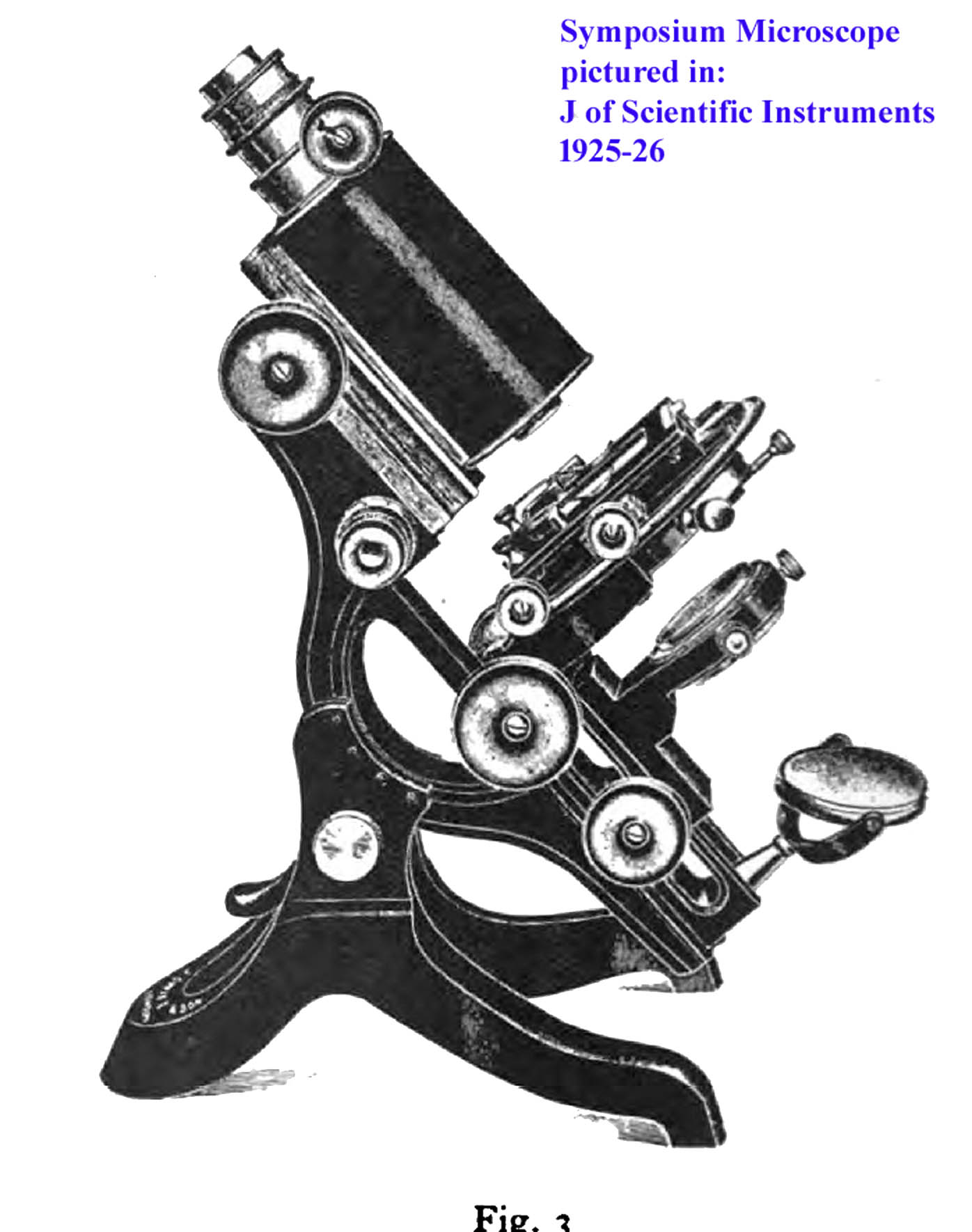MICROSCOPE-ANTIQUES.COM © 2013-23.
MODEL: SWIFT PHOTOGRAPHIC PETROGRAPHIC SYMPOSIUM
WALE-LIMB 'RESEARCH' MICROSCOPE
DATE: c. 1920s-40(?)
MAKER: JAMES SWIFT & SON
SIGNED: ?
SERIAL NUMBER: 18941
DESCRIPTION: This microscope, unfortunately no longer in my collection, is a Wale Limb Petrographic Microscope. It has a smoothly operating Wale limb inclination joint with clamp. There is diagonal rack and pinion coarse focus, side fine adjustment, and diagonal rack and pinion adjustment to the outer draw tube. A second draw tube pulls out. Both draw tubes are graduated. There are separate controls for the X and Y axis of the mechanical stage each with scales. The mechanical stage rotates and can be locked in position and has a provision for centering. There is a Bertrand lens in the lower part of the optical tube. The substage has condenser fittings above a polarizer. There are several dovetail condenser mounts for quick exchange of condensers.
This may be one of the last of the Wale Limb microscopes. It was sold to me at auction from Bonhams in 1999 as lot 109 and was previously exhibited with the Arthur Frank Loan Collection in Glasgow 1973. Unfortunately it is no longer in my own collection.
HISTORY OF THE SWIFT WALES LIMB SYMPOSIUM
MICROSCOPES.


The Swift Symposium
microscope was first described in 1920 by Powell Swift in:
Spiers,F.S. THE MICROSCOPE ITS DESIGN, CONSTRUCTION, AND APPLICATIONS, A SYMPOSIUM AND GENERAL DISCUSSION BY MANY AUTHORITIES.
It features the quick change system for condensers similar to the one for objectives named after Sloan. Apparently it was initially made in lacquered brass but soon in the black finish that was becoming popular in the second decade of the 20th Century. Its design apparently changed as time went on but it always featured a Wale limb inclination.
Powell Swift described a research microscope
which he had jointly developed with R & J Beck, in consultation with two of the most respected names in microscopy at the time, Sir Herbert Jackson and Mr J. E. Barnard. The instrument combined several previously well-known features into a stand felt to represent an instrument optimized for any type of research at the time. That microscope featured a Wale limb and several additional features.
It featured a Wale
Limb, (invented by the American George Wale) which Swift had provided on prior instruments for many years. The Wale limb
had been developed to avoid shifting the center of gravity during inclination, but Swift pointed out that this version, avoiding an axle through the limb,
would allow inclination so smoothly that adjustments such as the focus, would not be disturbed in the slightest way during inclination.
Second, it featured a rack and pinion drawtube, and a supplementary drawtube, inside the first, allowing the tube length to be adjusted from 140 to 250 mm.
Third, it featured the Beck double-lever fine adjustment, providing the ability to focus on even the finest details at high powers with ease.
In addition, its stage was said to be unusually rigid and supported through a right angle cradle said to be superior to most arrangements of the time.
The stage had a 2 3/4 inch travel, thus allowing metallurigical use. The stage also had concentric rotation, as well as the X and Y motion. It was also
provided with the ability to be centered in the optical axis.
A unique feature was the use of the Sloan-type changer in the substage, allowing rapid changing of substage accessories. The same type of changer was said to be supplied to the nose, but in the example shown here, a triple objective changer is found instead, and the Bertrand lens is integrated
into the tube above the objectives.
The nosepiece Sloan objective changer was originally said to accept multiple accessories including a Bertrand lens arrangement, a waveplate, or a vertical illuminator.
The microscope featured above on this page is a petrographic version made later with aluminum alloys.
Another feature was the massive 'A-frame' foot which could be bolted to the table for photomicrography. All the rack and pinions were of the spiral
or
diagonal type, invented by Swift.
For a review of the Wale limb microscopes by Swift, see the Swift Wales Evolution page.
*Spiers, FS, Editor: The Microscope, its Design, Construction and Application A Symposium and General Discussion By Many Authorities Charles Griffin & Company Ltd London 1920.

